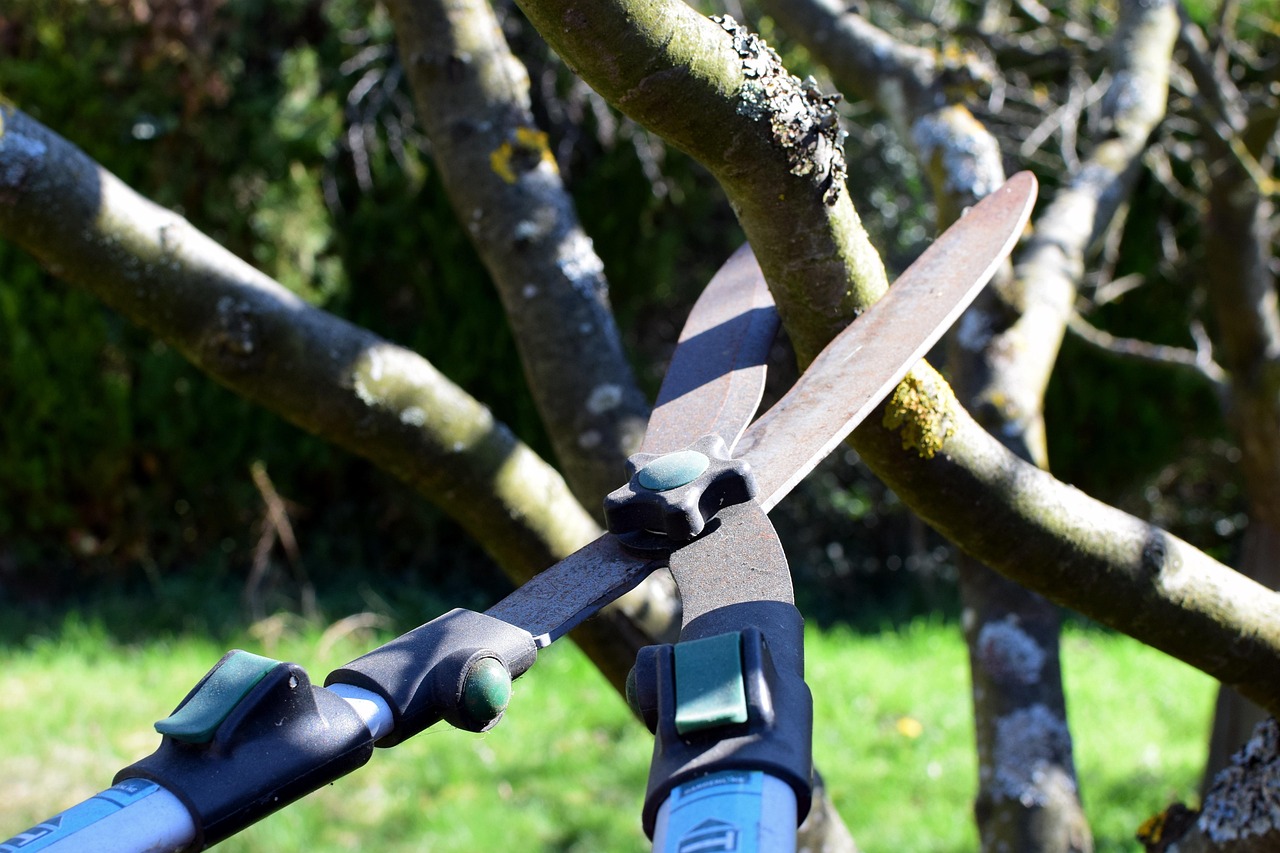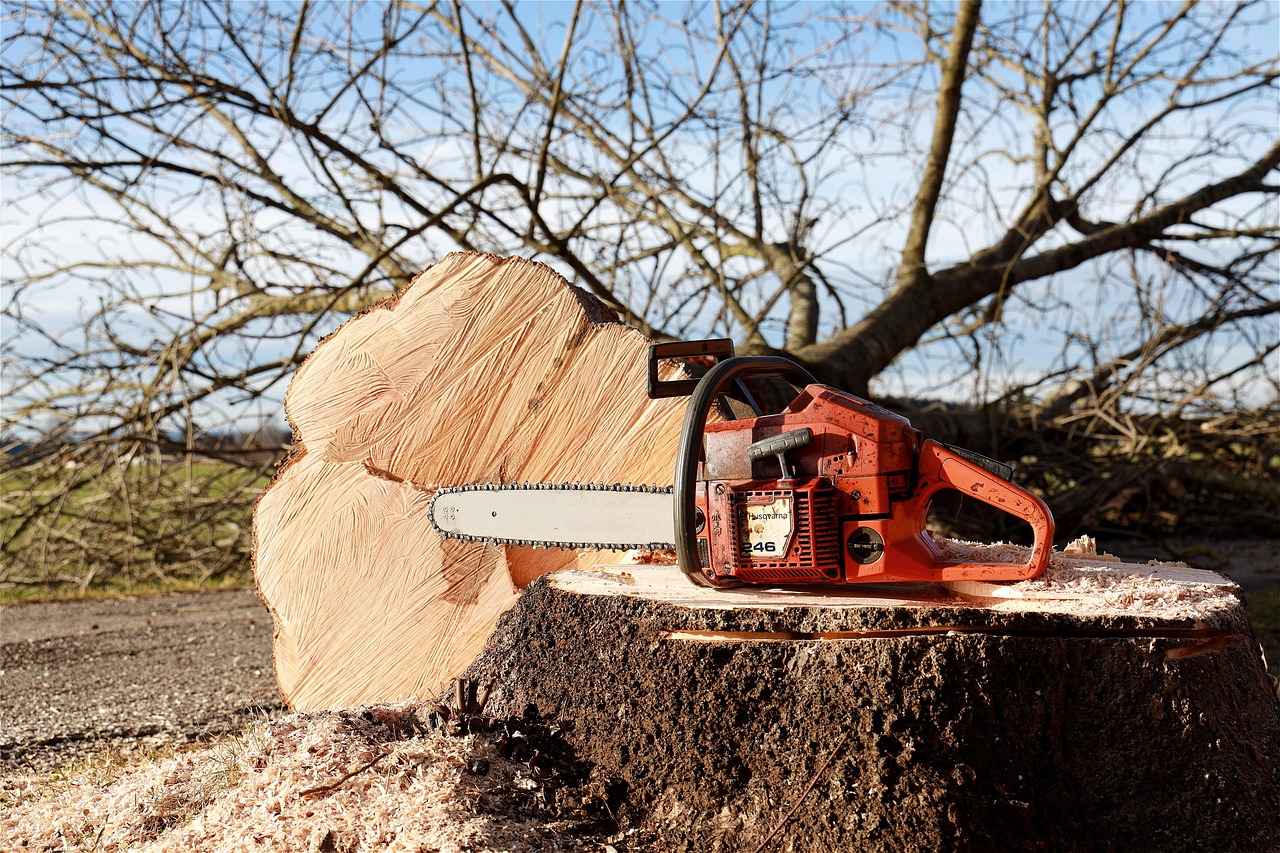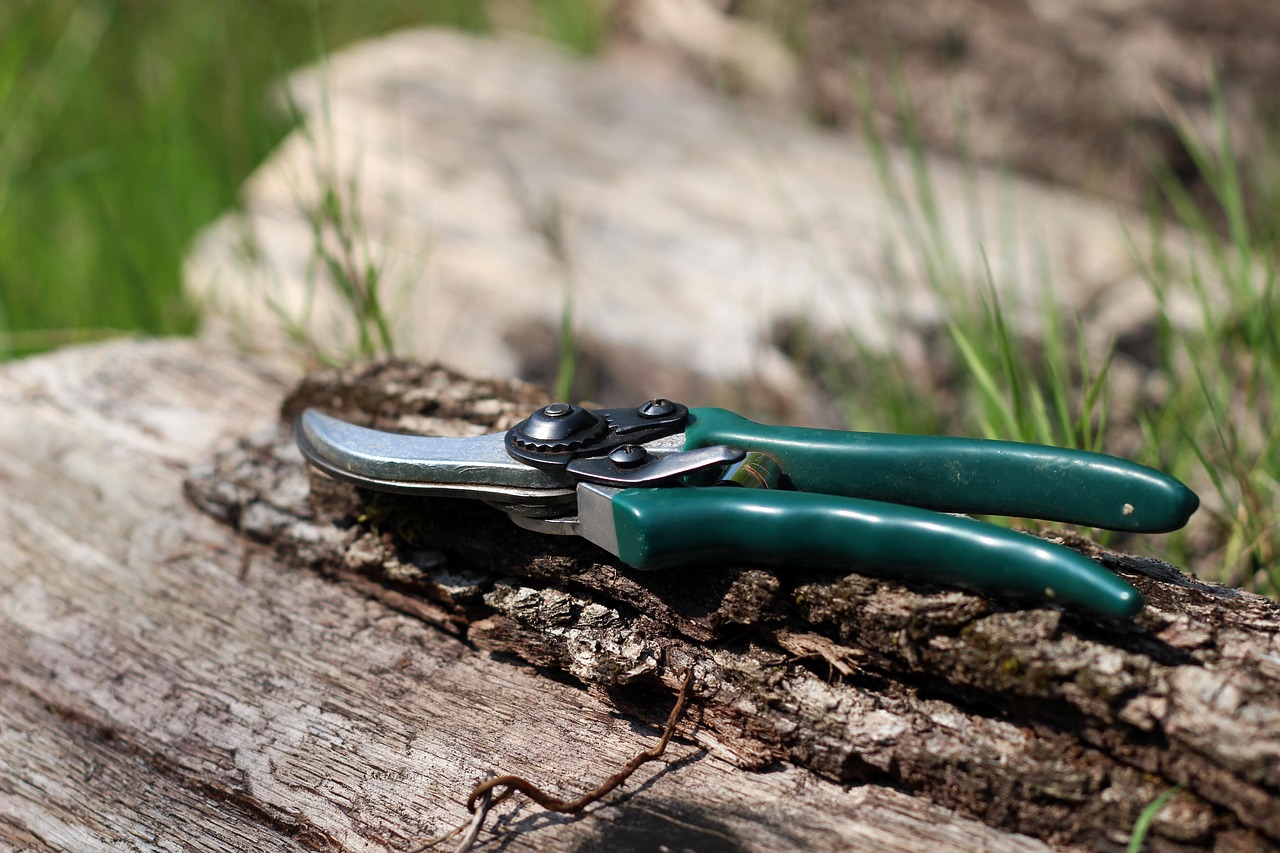Pruning is an essential practice for managing and controlling invasive tree species. By carefully removing specific branches and reducing the overall size of these trees, landowners can limit their spread, promote the health of native plants, and maintain ecological balance.
Invasive tree species pose significant threats to local ecosystems. They can outcompete native flora for resources such as sunlight, water, and nutrients. This competition often leads to a decline in biodiversity, altering habitats and making it difficult for native species to thrive. Pruning serves as a vital tool in mitigating these negative impacts. It allows for more effective management of invasive species while fostering the growth of native plants.

Understanding the characteristics of invasive tree species is crucial for successful pruning. Common invasive trees include the Asian honeysuckle, Norway maple, and tree of heaven. These species often grow rapidly and can reach substantial heights, making them challenging to control. They also tend to produce large quantities of seeds, which facilitates their spread.
Identifying Invasive Tree Species
Successful management begins with proper identification. Recognizing invasive tree species in your area is essential for effective pruning and control. Here are some common characteristics of invasive tree species:
- Rapid growth rate
- High seed production
- Ability to thrive in disturbed habitats
- Presence of aggressive root systems
It is also helpful to know where these species are commonly found. Many invasive trees thrive in urban settings, along roadsides, and in disturbed landscapes. Monitoring these areas can help you take timely action.

Benefits of Pruning Invasive Trees
Pruning invasive tree species offers numerous benefits beyond just controlling their growth. Here are some key advantages:
- Reduction of Seed Production: Pruning can significantly decrease the number of seeds produced by invasive trees, reducing the chances of new growth.
- Encouraging Native Species: By creating more space, pruning allows native plants to flourish and reclaim their habitats.
- Improving Aesthetics: Regular pruning can enhance the visual appeal of landscapes overrun by invasive trees.
- Enhancing Biodiversity: Managing invasive species helps restore ecological balance, benefiting various wildlife populations.
Pruning Techniques for Invasive Tree Species
When pruning invasive trees, employing the right techniques is critical. Different methods can be used depending on the species and the extent of infestation. Here are some effective pruning techniques:
- Crown Reduction: This technique involves trimming the upper branches to reduce the height of the tree while maintaining its overall structure.
- Crown Thinning: Removing selected branches within the crown helps improve air circulation and light penetration, promoting healthier growth.
- Pollarding: This method involves cutting back the tree to a specific height to encourage new growth from the trunk or main branches.
- Rejuvenation Pruning: For overgrown invasive trees, this technique involves cutting them back drastically to stimulate new growth.
Each technique has its advantages and should be chosen based on the specific situation. It’s essential to consider the tree’s growth habit and the surrounding environment when selecting a method.

Timing for Pruning
The timing of pruning is also crucial for effective management. Ideally, pruning should occur during the dormant season, which is typically late fall to early spring. During this period, trees are less active, reducing stress on them and minimizing the risk of pest infestations. However, it’s important to be cautious with certain species that may be more vulnerable during specific times of the year.
To maximize success, assess each tree individually. Take note of its growth patterns and any unique challenges it presents. This way, you can develop a tailored approach that enhances your efforts in controlling invasive species.
Tools for Pruning
Having the right tools is vital for effective pruning. Some essential tools include:

- Hand Pruners: Ideal for small branches and precise cuts.
- Loppers: Useful for cutting thicker branches that hand pruners cannot handle.
- Saws: Needed for larger limbs or trunks.
- Safety Gear: Always wear gloves, goggles, and protective clothing to ensure safety during pruning.
Using sharp, clean tools will provide cleaner cuts, reducing stress on the plant and promoting faster healing. Regular maintenance of your tools is equally important for their longevity and effectiveness.
Implementing a systematic approach to pruning can significantly help in managing and controlling invasive tree species. By understanding these concepts and applying effective techniques, landowners can contribute to healthier ecosystems and promote biodiversity in their local environments.
Understanding the Ecological Impact of Invasive Trees
The ecological impact of invasive tree species extends far beyond their immediate surroundings. When these trees take root, they can dramatically alter entire ecosystems. Understanding these impacts is crucial for developing effective management strategies. Invasive trees can change soil composition, water availability, and habitat structures.
One significant effect of invasive trees is their role in altering soil chemistry. Many invasive species have different nutrient requirements than native plants. As they grow, they can deplete the soil of essential nutrients or introduce new elements that disrupt local plant communities. For example, some invasive trees may produce leaf litter that changes soil pH or increases nitrogen levels, making it difficult for native species to survive.
Effects on Biodiversity
Biodiversity is vital for ecosystem health. Invasive tree species threaten this biodiversity by outcompeting native plants. This competition can lead to a reduction in plant diversity, which in turn affects the animals that depend on these plants for food and shelter.
- Loss of Native Plants: Invasive trees often grow faster and establish deeper root systems, allowing them to monopolize resources.
- Disruption of Food Chains: As native plants decline, the insects and animals that rely on them also suffer, leading to further ecological imbalance.
- Alteration of Wildlife Habitats: Many invasive species create dense thickets that are unsuitable for native wildlife, reducing habitat availability.
Strategies for Pruning Invasive Trees
Effective pruning strategies are essential for managing invasive tree species. Different methods can be employed depending on the specific challenges posed by each species. Here are several key strategies:
- Seasonal Pruning: Timing your pruning efforts can make a significant difference. Pruning during the dormant season minimizes stress on the tree and reduces the risk of disease transmission.
- Targeted Cutting: Focus on cutting back the most aggressive branches first. This approach helps in reducing the tree’s overall vigor.
- Repeated Pruning: Regularly scheduled pruning sessions will help keep invasive trees in check. It’s often necessary to return to the same trees multiple times over several years.
Integrating Pruning with Other Control Methods
Pruning should not be the only strategy employed to manage invasive tree species. Integrating other control methods can enhance its effectiveness. Here are some complementary methods:
- Chemical Control: Herbicides can be used alongside pruning to kill invasive trees completely. However, care must be taken to follow all safety guidelines and regulations.
- Mechanical Removal: In some cases, uprooting or cutting down trees entirely may be necessary, especially if they are severely impacting native ecosystems.
- Replanting Native Species: After removing invasive trees, consider planting native species to restore balance and promote biodiversity.
Monitoring and Assessing Pruning Effectiveness
Monitoring the effectiveness of your pruning and management efforts is critical for long-term success. Here are some strategies to ensure you are on the right track:
- Regular Assessments: Conduct periodic evaluations of the areas you have pruned. Document changes in growth patterns and the health of surrounding native species.
- Data Collection: Keep records of pruning dates, techniques used, and any follow-up actions taken. This data will help in assessing overall effectiveness.
- Community Involvement: Engage with local environmental groups or community members. Their observations and insights can be invaluable.
The Role of Community in Managing Invasive Trees
Community involvement plays a vital role in managing invasive tree species. Collaborative efforts can amplify individual actions and lead to more significant results. Here are ways communities can contribute:
- Education and Awareness: Hosting workshops and informational sessions can help raise awareness about the impacts of invasive species and effective management techniques.
- Volunteer Programs: Organizing volunteer days focuses on community members working together to prune and remove invasive species from local parks and green spaces.
- Partnerships with Local Governments: Collaborating with local authorities can lead to more extensive removal efforts and resource allocation for ongoing maintenance.
The combined efforts of individuals and communities can create a powerful force against invasive tree species. By raising awareness and engaging in effective pruning practices, communities can significantly impact their local ecosystems for the better.
Resources for Landowners
Landowners seeking assistance in managing invasive tree species have various resources available. Here are some valuable options:
| Resource Type | Description | Website/Contact |
|---|---|---|
| Extension Services | Local agricultural extension services offer expertise on invasive species management. | USDA Extension |
| Environmental Organizations | Many non-profits focus on conservation efforts and provide resources for landowners. | The Nature Conservancy |
| Online Guides | A variety of online resources provide guides for identifying and managing invasive trees. | Invasive Species Information |
Utilizing these resources can enhance your understanding and ability to manage invasive tree species effectively. Through education and proper techniques, landowners can make a meaningful difference in their local ecosystems.
Case Studies of Successful Invasive Tree Management
Examining successful case studies offers valuable insights into effective strategies for managing invasive tree species. These examples can provide inspiration and practical ideas for landowners and communities alike. Below are several notable case studies that illustrate different approaches to invasive tree management.
Case Study 1: The Removal of Japanese Knotweed
Japanese knotweed is a notorious invasive plant that often disrupts local ecosystems. In one community, a concerted effort was made to control this species through a combination of physical removal and targeted herbicide application.
The process included:
- Initial Assessment: The community assessed the extent of the infestation, mapping areas heavily populated by Japanese knotweed.
- Physical Removal: Volunteers dug out the roots to prevent regrowth, ensuring all parts of the plant were removed.
- Ongoing Monitoring: After removal, the area was monitored for any signs of regrowth, allowing for timely intervention with herbicides if necessary.
This approach not only significantly reduced the spread of the invasive species but also encouraged local residents to participate in environmental stewardship.
Case Study 2: Managing Norway Maple in Urban Areas
Norway maple is a common invasive tree found in urban settings. A city implemented a management plan focusing on both removal and public education. The strategy included:
- Public Education Campaign: The city launched a campaign to educate residents about the dangers of invasive trees, particularly Norway maple. This included workshops and informational brochures.
- Pruning Initiatives: City workers and volunteers conducted regular pruning sessions, targeting Norway maples in parks and streets.
- Replacement Planting: As invasive trees were removed, native species were planted to restore biodiversity and improve the aesthetic of public spaces.
This multi-faceted approach not only tackled the invasive species but also fostered community involvement and awareness.
Challenges in Pruning Invasive Species
While pruning is an effective method for managing invasive tree species, it is not without challenges. Understanding these challenges can help landowners prepare for potential obstacles in their management efforts.
- Timing Issues: Pruning at the wrong time of year can lead to increased growth or spreading of seeds. Proper timing is essential for effectiveness.
- Sustainability Concerns: Continuous pruning may be needed, leading to concerns about sustainability and resource allocation for ongoing efforts.
- Regrowth Risks: Many invasive trees have aggressive regrowth capabilities. Without follow-up actions, pruned trees may rebound quickly.
Addressing these challenges requires careful planning and ongoing evaluation of management strategies.
The Role of Technology in Managing Invasive Trees
Technology has become an increasingly important tool in managing invasive tree species. Various technological advancements can enhance traditional methods and improve efficiency. Here are some notable examples:
- GIS Mapping: Geographic Information Systems (GIS) technology helps in mapping invasive species locations, allowing for targeted management efforts.
- Drones: Drones can be used to survey large areas quickly, identifying infestations that may not be easily visible from the ground.
- Mobile Apps: Several mobile applications allow users to report sightings of invasive species, contributing to data collection and awareness efforts.
The integration of technology into management practices not only streamlines efforts but also encourages community participation through easy reporting and awareness tools.
Best Practices for Community Engagement
Engaging the community is critical for successful invasive tree management. Here are some best practices that can foster participation and collaboration:
- Create Inclusive Programs: Design programs that invite participation from various community members, including schools, local organizations, and environmental groups.
- Offer Training Sessions: Provide training on identification, removal techniques, and the importance of managing invasive species to empower community members.
- Recognize Volunteer Efforts: Acknowledge the contributions of volunteers through awards or public recognition events, fostering a sense of ownership and pride.
By creating an inclusive environment where community members feel valued and informed, landowners can enhance their efforts in managing invasive tree species effectively.
The Importance of Long-Term Planning
A successful invasive tree management strategy requires long-term planning. Short-term fixes often lead to temporary results, while sustainable approaches ensure lasting ecological health. Here are some essential components of long-term planning:
- Establish Clear Goals: Define specific, measurable goals for managing invasive species, such as reducing their population by a certain percentage within a set timeframe.
- Create a Management Timeline: Develop a schedule that outlines when assessments, pruning, and other management actions will take place over the coming years.
- Allocate Resources Wisely: Ensure adequate resources are available for ongoing efforts, including funding for tools, training, and community initiatives.
A comprehensive long-term plan will help maintain momentum in managing invasive tree species while fostering community commitment to conservation efforts.
Integrating Pruning with Ecological Restoration
Pruning invasive tree species is not just about control; it is also about restoring ecological balance. Integrating pruning efforts with ecological restoration can create healthier habitats for native species. Here are ways to effectively combine these approaches:
- Habitat Restoration: After pruning invasive trees, consider reintroducing native plant species. This promotes natural biodiversity and helps re-establish local ecosystems.
- Soil Health Improvement: Restoring native vegetation can enhance soil health. Native plants often improve soil structure and nutrient availability, benefiting the entire ecosystem.
- Wildlife Habitat Creation: Planting native species will provide food and shelter for local wildlife, encouraging the return of various animal populations.
By aligning pruning strategies with broader ecological goals, communities can foster environments that support both human and wildlife needs. This holistic approach enhances the effectiveness of invasive tree management.
Community Workshops and Educational Programs
Education is central to successful invasive tree management. Community workshops can serve as platforms for sharing knowledge and best practices. Here are some ideas for effective educational programs:
- Hands-On Training: Organize workshops where participants can learn proper pruning techniques, identification of invasive species, and the use of tools.
- Guest Speakers: Invite experts in ecology or environmental science to present on the impacts of invasive species and successful management practices.
- Field Days: Conduct field trips to local parks or infested areas where participants can see the effects of invasive trees firsthand and learn about ongoing management efforts.
These programs not only educate but also build community ties, encouraging collaboration in invasive species management.
The Importance of Policy and Advocacy
Effective management of invasive tree species often requires supportive policies and advocacy. Engaging with local governments can facilitate the development of regulations that promote sustainable practices. Here are key points to consider:
- Regulatory Frameworks: Advocate for policies that restrict the planting of known invasive species and encourage the use of native alternatives in landscaping and urban planning.
- Funding Opportunities: Work with local authorities to secure funding for invasive species management projects, including grants that support community-led initiatives.
- Partnerships with NGOs: Collaborate with non-governmental organizations to enhance resource availability and technical support for managing invasive trees.
Advocacy efforts can amplify community voices, ensuring that invasive species management receives the necessary attention and resources from policymakers.
Monitoring Success and Adapting Strategies
As communities implement their invasive tree management plans, ongoing monitoring is essential. Regular evaluations can help assess the effectiveness of pruning strategies and identify areas needing adjustment. Here are some steps for effective monitoring:
- Set Baseline Data: Before initiating management efforts, gather baseline data on the density and distribution of invasive species to measure progress accurately.
- Conduct Regular Surveys: Schedule periodic surveys to track changes in invasive tree populations and the recovery of native species.
- Adapt Management Plans: Be prepared to adapt strategies based on monitoring results. Flexibility ensures the approach remains effective over time.
This iterative process allows communities to refine their management strategies continually, leading to more successful outcomes in controlling invasive species.
Final Thoughts
Managing and controlling invasive tree species through pruning is a multifaceted endeavor that requires a combination of knowledge, community involvement, and long-term planning. By understanding the ecological impacts of invasive trees, employing effective pruning techniques, and integrating restoration efforts, communities can work towards healthier ecosystems. Education and advocacy play critical roles in fostering community engagement and ensuring sustained efforts.
The journey toward managing invasive tree species is ongoing. It requires dedication, collaboration, and a willingness to adapt strategies as conditions change. With the right approach, communities can successfully reclaim their landscapes from invasive species, restoring balance and promoting biodiversity for future generations.
In conclusion, the importance of managing invasive tree species extends beyond individual properties; it contributes positively to the overall health of the environment. By taking action today, we can pave the way for a more sustainable tomorrow.
